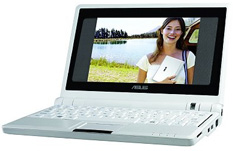Save $200 on all Dell XPS notebook purchases over $1499 – coupon code: TQHN5R8KB90DFM.
Save $200 on all Dell XPS desktop purchases over $1499 – coupon code: TQHN5R8KB90DFM
.
a celebration of science fiction, anime, and geek culture
Save $200 on all Dell XPS notebook purchases over $1499 – coupon code: TQHN5R8KB90DFM.
Save $200 on all Dell XPS desktop purchases over $1499 – coupon code: TQHN5R8KB90DFM
.
I am continuing my synopsis and screenshots of the first episode of Samurai Jack.
Follow below the fold… spoilers abound, of course. Continue reading “Jack and Aku”
via Eric Berger is this classic video about how to turn a sphere inside out. In the process they cover all sorts of topics from basic topology. It’s 20 minutes long, but utterly fascinating if you’re a math geek.
The story of Samurai Jack is summarized by his nemesis, Aku, in the voiceover that precedes every episode:
Long ago in a distant land, I, Aku, the shape-shifting Master of Darkness, unleashed an unspeakable evil! But a foolish Samurai warrior wielding a magic sword stepped forth to oppose me. Before the final blow was struck, I tore open a portal in time and flung him into the future, where my evil is law! Now the fool seeks to return to the past, and undo the future that is Aku!
It is very, very difficult to convey just what makes this series so incredibly compelling. Part of the reason for this is because it transcends a single “style” of animation. The artwork is clean, simple, and direct. The action unfolds almost like a manga, with multiple panels on screen and different viewpoints; at others. At times, the landscapes are gritty and dysfunctional and crowded; at others, it’s like classical Chinese paintings, especially when Jack journeys across the wilderness. At one moment, the characters are lean and stylized, at others incredibly detailed. There are entire episodes with minimal dialouge, and almost every episode has it’s own musical score.
And yet, for all the artistic complexity, the story is refreshingly simple: Aku is evil (incarnate). Jack must destroy him, by finding a portal to return to his own time and preventing Aku’s domination of the world. As Jack journeys across the enslaved Earth, he frees groups and entire races from Aku’s tyranny, inspires hope amongst the oppressed masses, and fights off a never-ending stream of robots, monsters, bounty hunters, and mystical creatures. Throughout every trial, he adheres to his code of honor and triumphs with the (literal, as we come to see) power of righteousness.
Below the fold are some screenshots from the first episode, which covers the events of Aku’s narration. Continue reading “Samurai Jack”
 Forbes has a fantastic, fascinating article about the road to development for the EEE. Lots of interesting tidbits, including how ASUS leveraged its role as a supplier for all the major vendors to get deals on components, how CEO Jonny Shih insisted on perfection rather than allow the device to be rushed out the door, and even how Microsoft came begging hat in hand to be a part of it, offering Windows for an unheard-of price discount (under $40 per license, so if the XP version is more expensive than $449, cry foul!). But I find the most interesting part to be how the machine is aimed at the “next billion” market:
Forbes has a fantastic, fascinating article about the road to development for the EEE. Lots of interesting tidbits, including how ASUS leveraged its role as a supplier for all the major vendors to get deals on components, how CEO Jonny Shih insisted on perfection rather than allow the device to be rushed out the door, and even how Microsoft came begging hat in hand to be a part of it, offering Windows for an unheard-of price discount (under $40 per license, so if the XP version is more expensive than $449, cry foul!). But I find the most interesting part to be how the machine is aimed at the “next billion” market:
Shih says Asustek will tap into a new market–consumers unable to buy computers because they’re too expensive or just too intimidating. Indeed, the Eee name comes from easy to learn, easy to play and easy to work. That new market has been nicknamed the second billion. An estimated 1 billion people now have access to computers and the Internet, but even in developed countries, computers are just out of reach for millions. In the developing world that number is in the hundreds of millions.
But Asustek clearly wants to connect with the first billion, too. For instance, the 2- to 8-gigabyte memory cards can be upgraded to 32 gigabytes and the RAM from 256 megabyte to 1 gigabyte by simply taking out two screws on the back of the machine, something that Shen demonstrates but isn’t including in the marketing materials. Asustek is also linking with mobile telecom companies to provide a 3g attachment, so users can be connected when Wi-Fi isn’t available.
Shamus is taking a break from Free Game Friday, so let me step in: Portal is available online in Flash for free. OK, it’s really a far simpler 2D version, but its still a decent little puzzler.
Until now, I’ve required users to be registered on the blog in order to leave comments. I’ve realized however that this does act as a deterrent to people who would impulsively comment but don’t want to load a few extra screens. So, I have taken a cue from Shamus and installed a captcha plugin. I’m using a derivative of the one he uses, called Peter’s Math Anti-Spam Plugin, and again taking a cue from Shamus I’ve configured it so it shows exactly the same math problem every time. (Incidentally, please assume completeness of the Real numbers before answering. Thank you.)
If you are a registered user, and are logged in (use the handy login form on top of sidebar) you won’t ever see the captcha. I am still disabling all pingbacks and trackbacks, and have also installed a domain blacklist to prevent spammy email addresses from registering (mostly mail.ru. Sorry, Russian Haibane fans). And I’ve got Akismet purring along in the background. Spam hasn’t really been a problem until now and if this (marginally) more open scheme results in a big increase in spam from registered bots, then I’ll yank it.
Notebook Review already has an article on hacking the eee – and getting it to run Windows XP. There’s a step-by-step install guide in the forums. They’ve got a helpful video to compare boot times for XP on the eee vs a standard laptop:
That’s just awesome. Performance running XP isn’t exactly gamer godbox but it will get the job done. The thing costs $399, remember. That’s less than any Blu-Ray drive 🙂
Note that Asus will sell a Windows version of the eee next year, but that will probably be more expensive. This is the way to do it on the cheap!
If you still want to run the thing in Linux, there’s also advice on how to add any program you want beyond the initial app list, as well as add a standard start menu and other tweaks. This thing is going to be the ultimate hacker’s guide. In a lot of ways it’s the Mac Mini done right.
(presently out of stock at New Egg. big surprise. reminds me of another hot product, that even rhymes…)
yes I know that combined sales of HD-DVD and Blu-ray discs are a negligible fraction of DVD sales; yes I know that high-profile retailers and studios are choosing (and switching) sides; yes I know that the format war will continue well into 2009, and most consumers don’t even care.
All of that is true, and yet, consider this: Wal-Mart will sell the Toshiba HD-A2 HD-DVD player tomorrow for $98:

Game over. You heard it here first.
(not much point in buying one unless you already have an HD-DVD. Conveniently, Walmart is also advertising a Sanyo 50-inch plasma for under a grand.)
(Steven asked for information about Asus notebooks, but for some reason I couldn’t log into the system to leave a comment, even though I am supposedly a registered user. So, I’ll just respond here.)
Asus is well-known for excellent notebooks. It’s one of those OEM brands, like Sager, that don’t have a lot of retail presence but to which notebook aficionados often turn, for build quality equal to or exceeding that of the majors like HP/Dell, but with better components and lower price. In the case of Sager, Dell literally just slaps their logo on the case and resells as their own brand.
There’s no better resource for notebook reviews than, of course, NotebookReview.com. They have a typically detailed and thorough review of the base Asus G2 model (which differs from Steven’s choice in a few components but is otherwise the same). That’s the best place to get an idea of the real performance, aesthetics, build quality, screen, etc – all the intangibles that you can’t get off a spec sheet.
 The model Steven is interested in, the ASUS G Series G2S-B1 Intel Core 2 Duo 17.1″ Wide UXGA, is available all over the place online: at NewEgg for $2300
The model Steven is interested in, the ASUS G Series G2S-B1 Intel Core 2 Duo 17.1″ Wide UXGA, is available all over the place online: at NewEgg for $2300, at Buy.com for $2064
, and at Amazon for $2200
. (I am an affiliate for each of these retailers).
I don’t think you can go wrong with this machine if you’re in the market for a serious desktop replacement (as long as you don’t intend to lug it around).